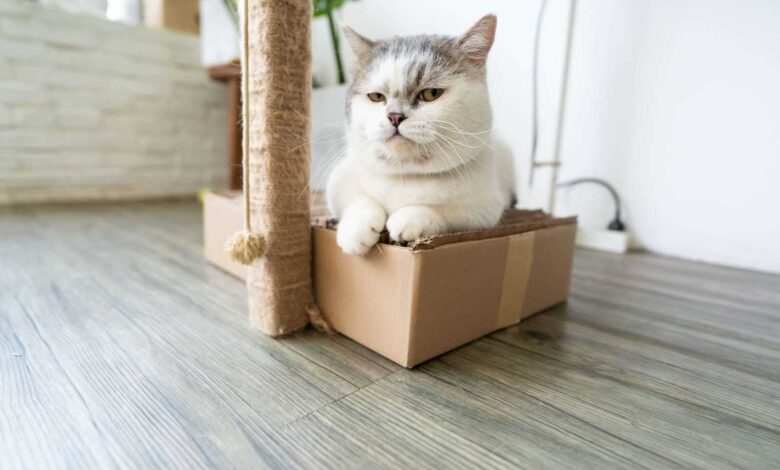How to Successfully Litter Train Your Cat Feline Friends

How to successfully litter train your cat is a fundamental aspect of pet ownership, crucial for maintaining a clean and harmonious living environment. Whether you’re a new cat parent or seeking solutions for existing litter training issues, our comprehensive guide is here to help. From basic techniques to specialized strategies, we provide a holistic approach to ensure a successful and stress-free litter training journey for both you and your beloved feline companion.
How to Successfully Litter Train Your Cat: A Step-by-Step Guide
- Choosing the Right Litter Box: Exploring different litter box options and selecting the most suitable one for your cat’s size and age.
- Introducing the Litter Box: Tips on introducing the litter box to your cat and creating a positive association with its use.
- Positive Reinforcement Techniques: Implementing effective methods to encourage and reward your cat’s successful litter box usage.
- Establishing a Litter Routine: Establishing a consistent routine for using the litter box and gradually fostering independence in your cat’s litter habits.
Cat Litter Training Tips for a Smooth Transition
- Selecting the Ideal litter Type: Understanding the importance of choosing the right litter type based on your cat’s preferences and sensitivities.
- Maintaining a Clean Litter Box: Establishing a regular scooping and cleaning routine to ensure a hygienic and inviting environment for your cat.
- Avoiding Sudden Changes: Tips on avoiding abrupt changes in litter type or brand to prevent any reluctance or aversion from your cat.
- Creating a Comfortable Environment: Setting up the litter box in a quiet and easily accessible area, away from noisy or high-traffic spaces.
Addressing Common Cat Litter Training Problems and Solutions
- Identifying Potential Triggers: Recognizing common triggers that may lead to litter box aversion or reluctance in your cat.
- Consulting with a Veterinarian: Understanding the importance of seeking professional advice to rule out any underlying health concerns contributing to litter training issues.
- Implementing Behavior Modification Techniques: Utilizing effective behavior modification methods to address specific litter training challenges.
- Utilizing Calming Tools and Techniques: Exploring the use of pheromone sprays, diffusers, or calming aids to create a soothing environment for your cat during the training process.
Understanding the Process of Switching Cat Litter: Tips and Precautions
- Gradual Introduction of New Litter: Step-by-step instructions on gradually introducing the new litter type to your cat to facilitate a smooth transition.
- Monitoring Your Cat’s Response: Tips on observing your cat’s behavior and preferences to ensure their comfort and acceptance of the new litter.
- Ensuring Consistency and Comfort: Creating a consistent and comfortable litter environment for your cat to prevent any aversion or stress during the transition.
- Promoting a Positive Transition Experience: Implementing positive reinforcement techniques to encourage and reward your cat’s successful adaptation to the new litter type.
Maintaining a Clean and Odor-Free Cat Litter Box: Best Practices
- Establishing a Cleaning Routine: Setting up a regular cleaning schedule to maintain cleanliness and hygiene in the litter box.
- Proper Disposal of Waste: Tips on proper waste disposal to prevent any lingering odors or discomfort for your cat.
- Deep Cleaning Techniques: Instructions on deep cleaning the litter box to eliminate any persistent odors and maintain a fresh and inviting atmosphere.
- Using Odor-Control Products: Exploring the use of odor-controlling litter or deodorizers to neutralize any unpleasant smells and create a pleasant environment for your cat.
Exploring the Benefits of Covered and Travel Litter Boxes for Cats
- Understanding the Advantages of Covered Litter Boxes: Exploring the benefits of covered litter boxes in providing privacy and reducing litter tracking.
- Introducing the Covered Litter Box Gradually: Step-by-step guidance on introducing the covered litter box to your cat and ensuring their comfort and acceptance.
- Facilitating Stress-Free Travel Litter Box Usage: Tips on acclimating your cat to the travel litter box to ensure a seamless experience during trips or transitions.
- Creating a Familiar Environment Away from Home: Ensuring a familiar and accessible space for your cat’s elimination needs while away from their usual environment.
Ensuring Successful Litter Training in Multi-Cat Environments
- Allocating Adequate litter Boxes: Understanding the importance of providing multiple litter boxes in multi-cat households to prevent competition and territorial issues.
- Strategic Placement of Litter Boxes: Tips on placing the litter boxes in separate, easily accessible locations to ensure each cat has their own designated space for elimination.
- Monitoring Interactions and Behaviors: Observing your cats’ interactions and litter box usage to identify and address any potential conflicts or concerns promptly.
- Promoting a Harmonious Environment: Fostering a sense of security and privacy for each cat to create a harmonious environment conducive to successful litter training.
Overcoming Litter Training Challenges with Cats Having Disabilities
- Customizing the Litter Box Setup: Tailoring the litter box setup to accommodate the specific needs of cats with mobility issues or disabilities.
- Selecting Comfortable Litter Options: Choosing litter types that are comfortable and suitable for cats with sensitivities or disabilities.
- Implementing Supportive Strategies: Utilizing positive reinforcement techniques and creating a supportive environment to encourage successful litter box usage.
- Consulting with Professionals: Seeking guidance from veterinarians or animal behaviorists to ensure the well-being and comfort of cats with disabilities during the litter training process.
How to Successfully Litter Train your Cat
By implementing the right techniques and understanding your cat’s specific needs, you can successfully navigate the intricate process of litter training. With patience, consistency, and a deep understanding of your feline friend, you can create a positive and rewarding litter training experience that strengthens the bond between you and your cat. Harness the power of these strategies and tips to foster a harmonious and stress-free environment for both you and your beloved cat.




